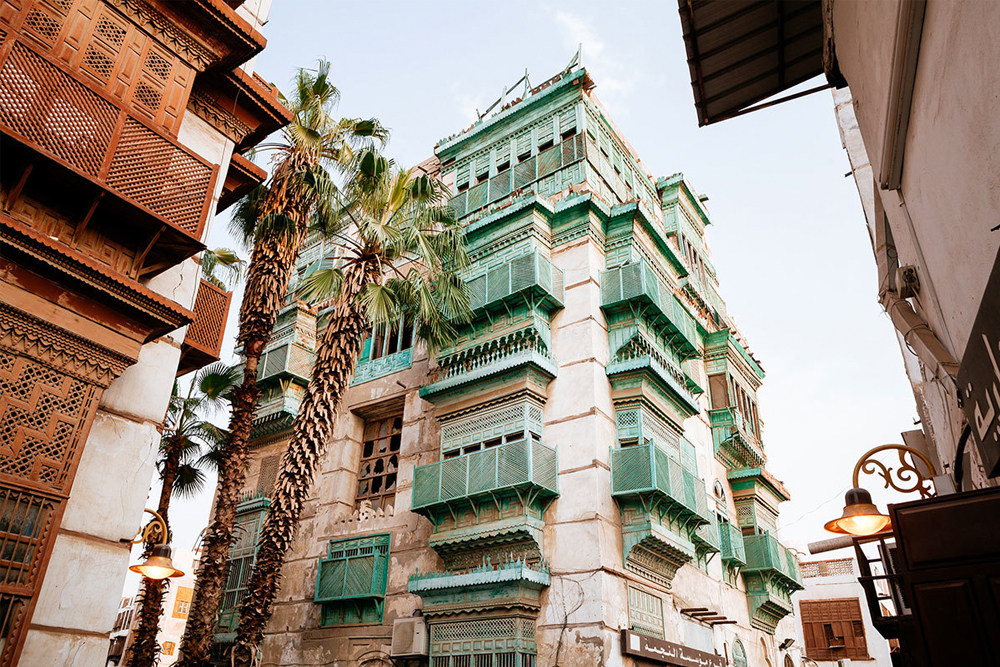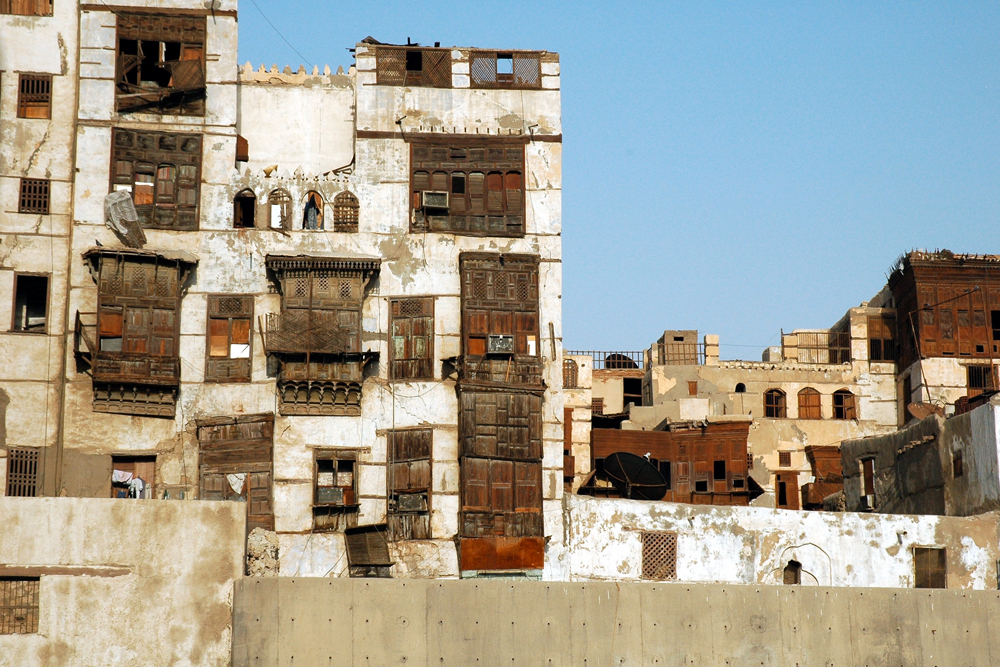
Many know Jeddah as a charming port city in Saudi Arabia, nestled along the Red Sea, offering miles of pristine shores, sea, and sun. Others know it as the second busiest port in the Gulf region and the largest city in the Makkah Province of the Kingdom, which means that pilgrims from all over the world pass through Jeddah on their way to Mecca. But what many may not know is that this city is also home to over 400 historic structures dating as far back as the 19th century, located in the old section of the city known as Al Balad.
Take a walk-through Al Balad, which is registered as a UNESCO World Heritage Site since 2014, and these buildings can be found everywhere. Some of the more famous heritage houses in Al Balad include Banaja, Al-Jamjoom, and Al-Nassif, the latter a four-floor, 40-room structure that is said to have been built 145 years ago and inhabited for a decade by Saudi Arabia’s founder King Abdulaziz.

These structures once served as houses to a bygone era and, according to UNESCO, they are a true reflection of the city's once old characteristics, from their architectural designs to the influences of pilgrims and traders. Indeed, it is undeniable that the distinct look and feel of these buildings stem from their original purpose, to house merchants, pilgrims, and visitors from around the globe. r, 40-room structure that is said to have been built 145 years ago and inhabited for a decade by Saudi Arabia’s founder King Abdulaziz.

In fact, in an article by UNESCO, it is said that historic Jeddah “reflects the final flourishing of the Indian Ocean sea trade after the opening of the Suez Canal in 1869 and the introduction of steamboats that linked Europe with India and Asia […] This brought enormous wealth to many merchants who built lavishly decorated houses, and it also led to developments of suqs and mosques. In addition, the increase in sea going vessels allowed many more pilgrims to make the pilgrimage to Makkah, resulting in an expansion in the provision of accommodation for these visitors."
The diversity and status of the former residents of these buildings has been built right into their very architecture and, today, a handful of these historic structures still remain in an otherwise modern Gulf city, with the Jeddah Municipality and the Saudi Ministry of Culture proactively preserving and restoring them. A handful of them still serve as houses, and others have been converted to museums such as Bait Saloom.

















